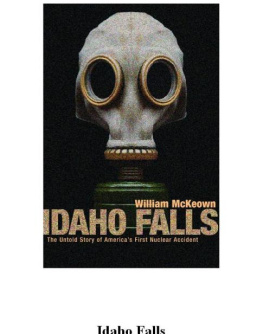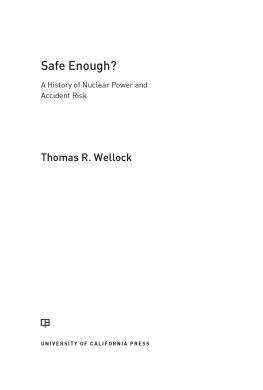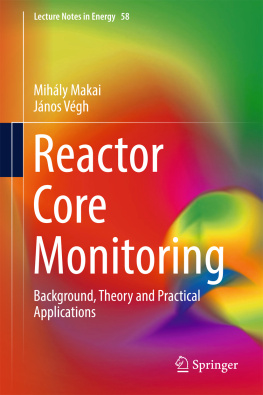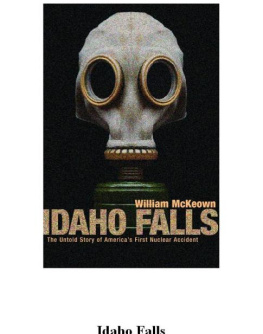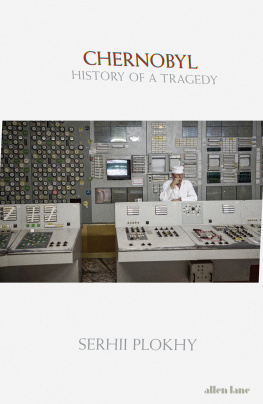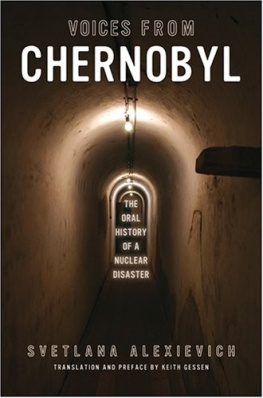I would like to thank the numerous people who shared their memories and their expertise about the SL-1 incident. Among those most generous with their time were John Byrnes, Robert and Bette Vallario, Stephen Hanauer, Dr. George Voelz, Don Petersen, Egon Lamprecht, Susan M. Stacy, Ed Fedol, and Diane Orr. Special thanks must also go to the graduates of the U.S. Army's Nuclear Power Program, who graciously cast their memories back more than forty years.
Nuclear theory, nuclear engineering and nuclear radiation are complex subjects, and I make no claim of expertise. In an effort to make this book readableand to keep the focus on the human drama at the SL-1 reactorI chose to boil these concepts down to the basics. Any errors in fact or context from doing so are entirely mine.
Finally, I would like to acknowledge my two wonderful daughters, Shannon and Caitlin, whose support never wavered during the long gestation of this book.
8. Nuclear Legacy
More than two decades after the SL-1 reactor explosion, officials at the Testing Station decided to tear down the lone structure still standing at the site. The white, two-story administrative building had been decontaminated after the incident. Everything inside was painstakingly cleaned by hand and put back into circulation. Fluorescent lights were taken apart, decontaminated, and reassembled; furniture was dipped into detergents and wiped clean; wrappers on office supplies were discarded and their contents saved; even the candy vending machine was washed and restocked. The building, with new interior walls and floors, was used for several years afterward, then abandoned when the army shut down its nuclear program and the site managers couldn't find any other uses for it. It squatted in the middle of the Lost River Desert for a decade, nothing more than a weathered, unmarked memorial to a macabre and mysterious event.
Doug Caldwell, a radiological control technician, helped dismantle the office building in 1993, chip up asphalt, and box low-level radioactive debris found in the yard. In the dead of winter, when the sun set early and the desert was plunged into blackness, Caldwell came to believeor at least he said he didthat the ghosts of the three men killed in the explosion roamed that patch of sagebrush. When it was night, you could swear you could see them looking at you through [the windows of] the old buildings, Caldwell told a reporter for a news story published in the Idaho Falls Post-Register in 1995.
The image conjured by Caldwell seems a nice, if trite, end to the saga of the SL-1 explosion, with its suggestion that the unsettled spirits of the dead crewmen roam the Lost River Desert looking for vindication and an end to the rumors that have tarnished their honor. But that's all fairy dust. The reality is Byrnes, Legg, and McKinley are encased in lead, locked in caskets, stored in vaults, and trapped by concrete. They're dead, and they'll be adding nothing to the technical evidence, partial truths, and rumors.
But there are people willing to speak for the two long-dead men and their hapless cohort, people who steadfastly believe the crewmen deserve exoneration. They have an alternate vision of that night inside the reactor, one that doesn't have Jack Byrnes, in a moment of anger or despair, tensing his muscles and pulling hard. Their version of the SL-1 story is about duty, sacrifice, and innocence.
The young men's families and most of their colleagues have always believed that none of the crewman did anything wrong on the night of January 3, 1961. They say the explosion was simply an accident: neglected technical problems collided with a poor reactor design and things went boom.

The SL-1 reactor is transferred out of the testing grounds.
Some believe Jack Byrnes might have died from being too conscientious. They suggest that after Byrnes and Legg connected the central control rod, Byrnes might have decided to exercise itmove it up and down slightlyas all crews had been instructed to do at the start of each shift as a quick fix for the problem of sticking rods. Some of the Army Nukes believe that because of the frigid temperatures that January, icy water was circulating in the shutdown reactor and, because of the previous maintenance work, at a lower level than usual. That change in the reactor's core temperature, along with the loss of the poisonous boron, was enough to put the nuclear machine on the verge of going critical. And that, they say, is exactly what happened when Byrnes raised the rod slightly.
If their version of events is true, if the explosion was simply an industrial accident, then the ghostly faces that Caldwell says he saw peering through the building's windows on dark nights would be those of perplexed young innocents, offered up as a sacrifice by an industry more interested in covering its collective butt than in taking responsibility for a mismanaged reactor program. And the clandestine rumblings about a love triangle leading to murder-suicide? The investigation commission's broad hint that stress or instability led Jack Byrnes to do something terribly wrong? The suggestion that the crew was undertrained and perhaps underscreened? All just a convenient and effective smoke-and-mirrors campaign to deflect attention away from the reactor's obvious flaws and its managers' sloppy performances. At least that's how some people view the official response to the explosion.
The Atomic Energy Commission really worked hard on putting a smooth coat on the whole thing, says Clay Condit, the physicist who monitored the investigation for the navy. The AEC was providing the money and it was supposed to be responsible [for overseeing the SL-1 project]. They were aware of the technical problems, but they didn't look into them closely. [Politically, the investigating committee] could not have said the AEC should have shut that facility down.
It was really nice to say, Hey, these guys, it was their fault. They had this love affair going or one of them committed suicide.' That's how this bullshit started. It was, I think, one hundred percent fabrication. Somebody threw that out on the table and they said, Let's go with that sucker.'
Stephan Hanauer, the nuclear safety expert who first publicly raised the specter of a passion-provoked murder-suicide, remembers top nuclear officials scurried like rats following the explosion: The Joint Committee on Atomic Energy in the US Congress was very, very powerful. And after the accident, they held a hearing [in June 1961]. The chairman said, Who is responsible for this dreadful accident?' And a whole bunch of powerful people said, Not me.' Finally, some captain or major in the army stood up and said, I was in charge, and it's my responsibility.' And the chairman would have none if it. He said Yes, yes, of course. But, in fact, the responsibility is much broader and much higher.'
Hanauer was working at the government's Oak Ridge Laboratory when the explosion occurred. Long before he heard the rumor of a murder-suicide, he thought the explosion needed to be examined by the nuclear industry for lessons. His superiors apparently thought otherwise: I actually wrote an article about it. I was going to publish it in Nuclear Safety magazine, which was an AEC publication, and it was rejected because it was too critical of the [reactor] design. It was rejected in Washington.
More than four decades after the catastrophic event at SL-1, Hanauer still suspects that something peculiar happened between the men on shift that January night in 1961. But even if that's true, there's little doubt in his mind that the reactor's managers put a loaded gun into a young guy's hand.

